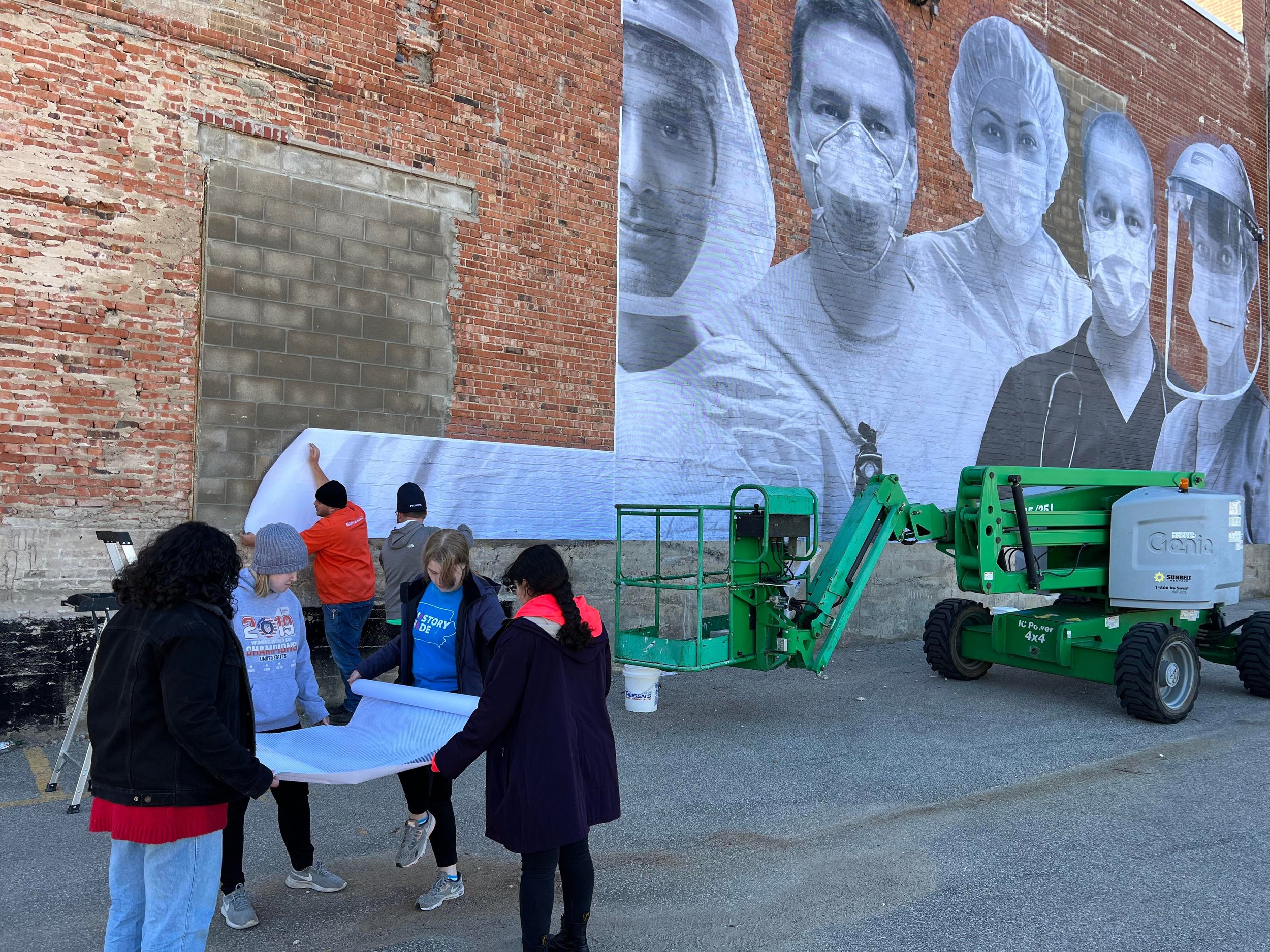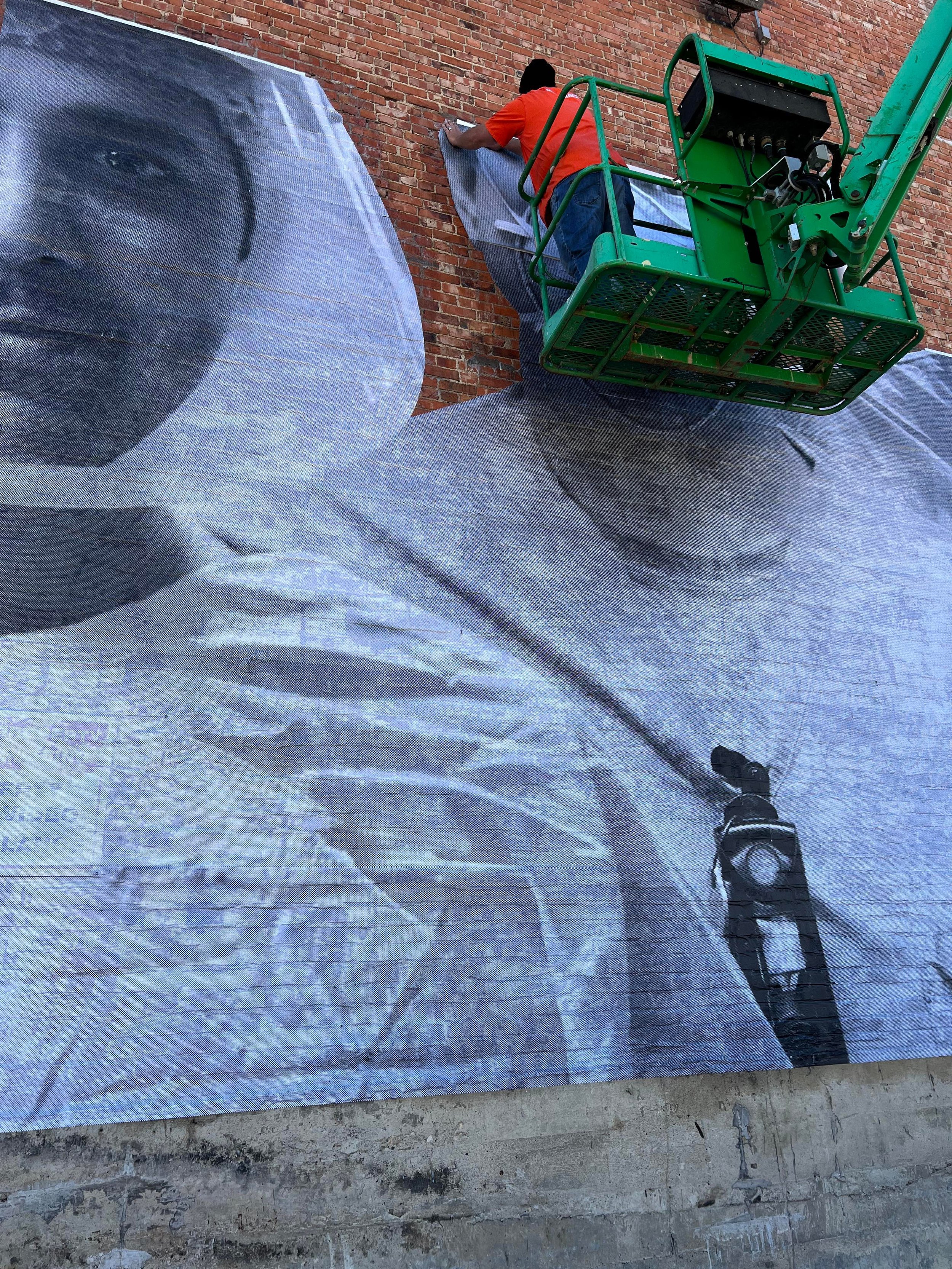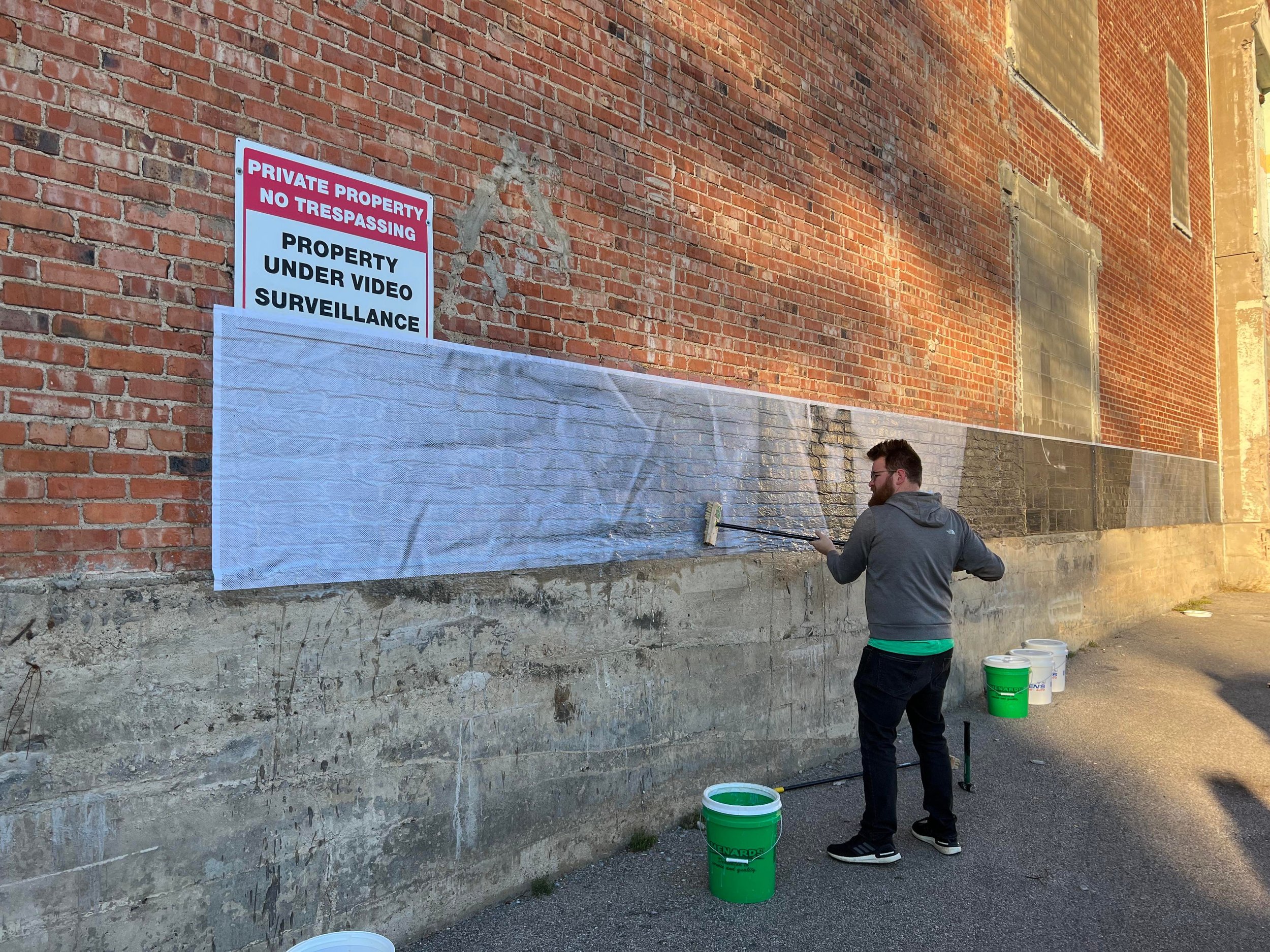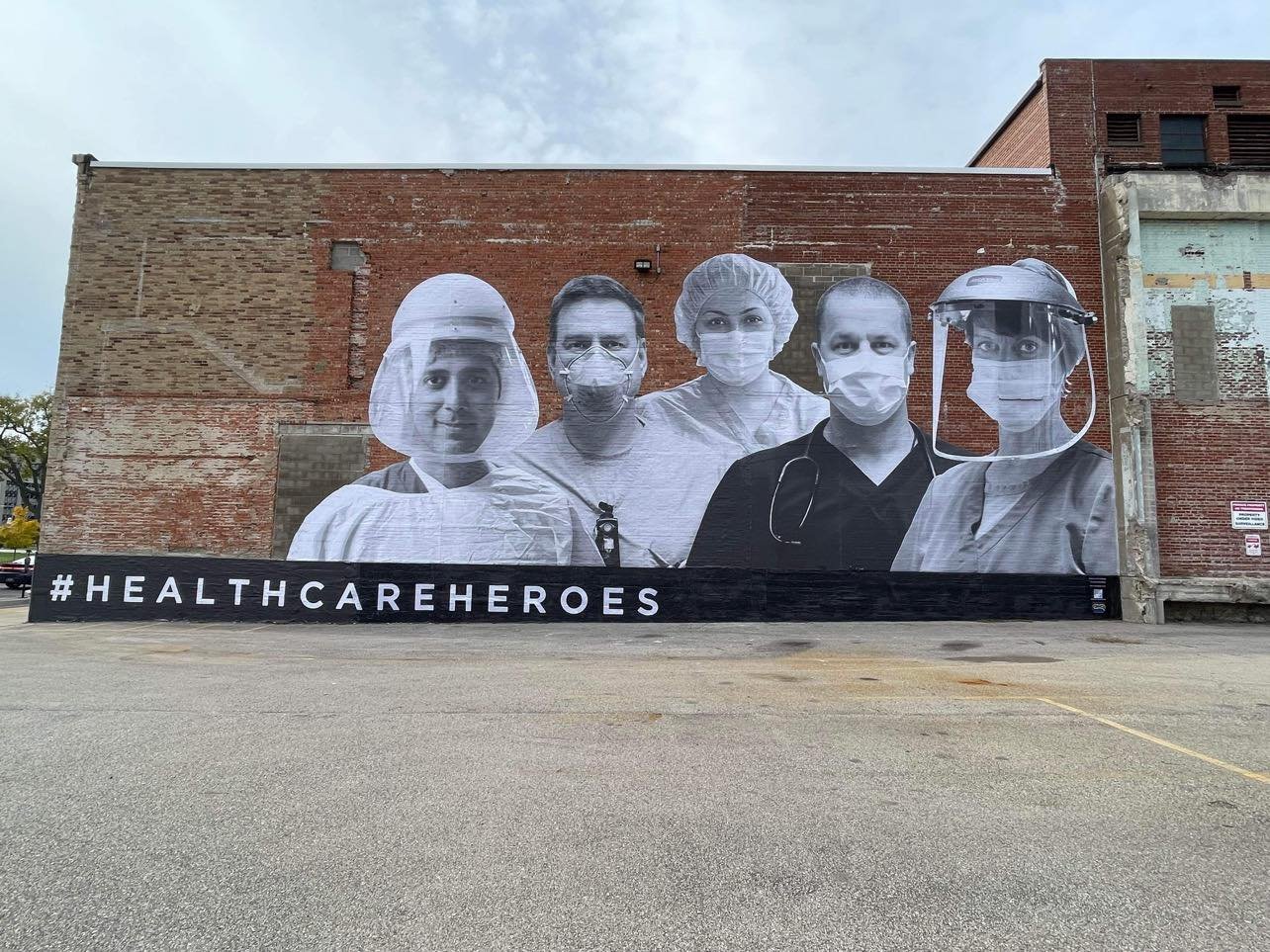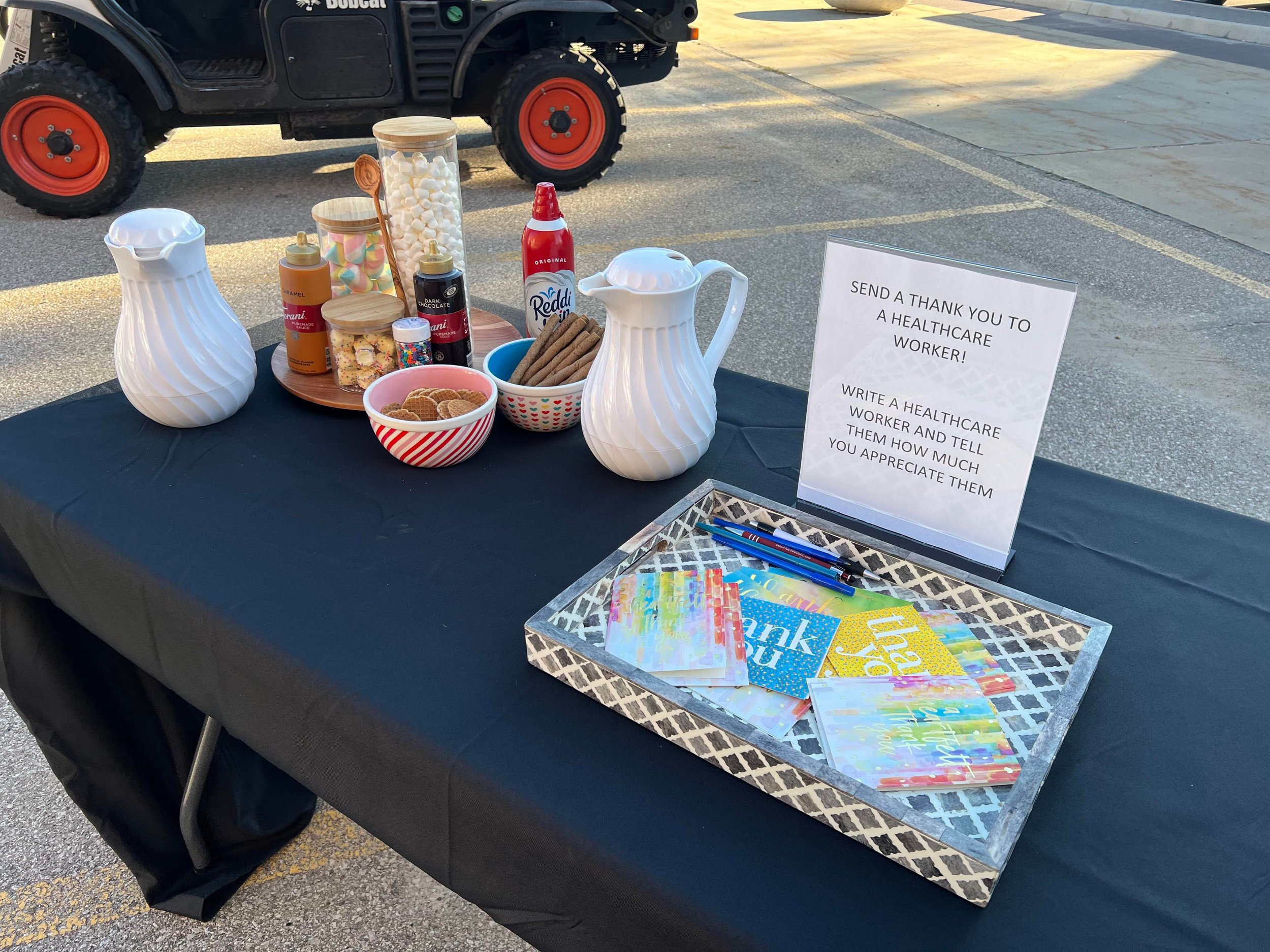Isaac x On view gallery
Q&A with Isaac
Q.) How did you originally get interested in wheat paste murals? And what is the process as you’ve refined it?
A.) I originally became interested in wheat paste murals after watching a TED talk video hosted by renowned French street artist JR, entitled "Use art to turn the world inside out". I was struck by the sheer scale of the murals and the balance between the mural and the environment - all of the art felt like it belonged in those spaces. I was most impressed though with the visual storytelling; these incredible messages and stories being presented in mundane spaces. I felt inspired and curious - I had to try it! Since then it's been such an adventure...especially for someone who always grew up by following the rules...installing murals in public spaces felt a little....rebellious.
The process is, embarrassingly simple! If you can paint a wall, you can wheat paste. Glue is made from adding a batter-like mixture of flour and cold water to boiling water and adding sugar. This creates a biodegradable glue that is impressively resilient. After brushing glue onto a surface, paper is pressed on to the glue. Then a finishing top coat of glue is applied to seal the paper to the wall. When working with large murals, I actually roll the paper on the wall like holiday wrapping paper - this helps the murals last longer and makes installing a lot easier! Obviously, there are lots of small nuances, such as how to prepare the paper for printing and making the paste - but the important thing to know is that wheatpasting is something that anyone can do.
Q.) What other mediums do you work in?
A.) I work primarily within digital spaces. I run a freelance business as a Digital Media Specialist; so I produce everything from basic web-design and marketing materials to animation/motion graphics - however the core of my business is video production. I love working with small-medium sized businesses, non-profits, and community organizations to help them tell their stories and get their messages promoted within their communities and across the state. I'm very passionate about archival materials (photos, videos, audio, etc) - so I've spent a lot of time working with the Fortepan Iowa photo archive and the original Fortepan archive in Budapest, Hungary. My all time favorite collaboration has been Proud and Torn: A Visual memoir of Hungarian History. I animated a series of photographs and videos to help bring the visual materials of the story to life; looking back, that project set in motion multiple trips to Hungary which eventually started me on this wheat pasting journey. The only downside to the digital work is the immense time spent in front of the computer - so the opportunity to get dirty with scissors, paper, and glue is an important breath of fresh air for me - physically, mentally, and creatively!
Q.) What inspiration did you have or approach did you decide to take with the healthcare heroes mural?
A.) I was recently inspired by an article I read about Portugal - a country with the highest vaccination rate in the world - following a visit I made there last month. One of the observations was how the country's pandemic organizer (a former submarine commander) played a crucial role in successfully responding to the pandemic. One of his tools was his military uniform; he would address the nation in uniform to inspire a sense of urgency. That got me thinking about how we, as Americans, look up to and respect our veteran and active military service members - those who put themselves directly in harm's way to preserve our safety and security. When looking at military/veteran imagery and advertising, I noticed two themes: a focus on faces (specifically eyes) and equipment. While the faces provide a visual connection to the people - the real people in the community who are continuing to voluntarily put themselves in harm's way for the health and safety of citizens - I think the story of healthcare hero identity is complicated by the addition of the equipment used to keep them safe. Just as a marine needs body armor, a helmet, and weapons to protect themselves in combat, the healthcare workers also need a unique set of equipment to protect themselves as well. So, in the same way that we visually honor and portray our veterans and service member heros, I found this to be an interesting and compelling way to honor our healthcare heroes.
The choice to showcase the protective equipment was made to strike a chord of realism and urgency - to showcase the reality of the everyday lives of these healthcare heroes. There are very few documented photographs from inside hospitals in the United States and around the world during the pandemic. The opportunity to construct a piece that activly reflects the reality of the everyday from inside the hospitals is, to me, the key component for this mural...an answer to questions like: Why these people? Why now? Why portray them this way? Because - this is what the public isn't seeing.
Q.) Can you share a little about your experience in the hospital and how it informed the final collage?
A.) Sure! With this kind of piece, or any piece in general, I always try to approach the story or the subjects with flexibility... sure, I have an idea...but facilitating the opportunity for the story that needs to be told, to emerge or reveal itself on its own terms, is crucial. So, it was important to go into the hospitals with an open mind. Thus, when I met with each subject, I photographed them in their own environment to preserve a sense of feeling and truth to their experience and emotions in that moment. I caught many of these healthcare heroes in the middle of their jobs. There was no lit studio or room... lots of hallways, staging rooms, and offices. I simply asked the subjects to communicate through their eyes - "close your eyes, think about how you are feeling in this moment. I'll say 3..2..1.. - then please open your eyes and look directly at the camera" - those were my instructions. Looking in someone's eyes is such an intimate experience - you can get a lot from that - and the fact that the subjects are dressed with their protective equipment really helps the viewer focus on the eyes and not get distracted by things like facial expressions. I think the presence of the equipment also adds an element of curiosity to the experience that would otherwise be lost - it begs you to not just give a passing glance, but to actually look.
In all, working in the hospitals was such a reaffirming experience...reaffirming in the decisions I made on how to portray our healthcare heroes and bring some transparency to the ongoing situation. I hope that viewers will understand that this invisible enemy is still raging in our hospitals and communities...and that when making choices regarding vaccines and masks...our decisions should be made with others, our community, and especially our healthcare heroes in mind, rather than just our independent selves.
Q.) What is a dream project that you would love to work on?
A.) It's difficult to imagine a dream project; the possibilities for wheat-paste murals are practically endless. I certainly have aspirations of working with schools and students on projects based in social justice (issues of race, class, human rights, LGBTQ+ initiatives, etc). It would certainly be wonderful to do work internationally, maybe return to Hungary someday, for large scale collaboration with the Hungarian National Gallery or something like that. But a dream? Maybe a collaboration with JR. That would be really, really cool. For now though, the opportunity to work with community members across Iowa, in an effort to lift up their voices, is a dream come true.

